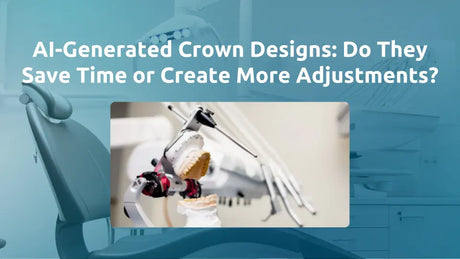The question of whether to save or replace a failing tooth is one of the most debated topics in restorative dentistry today. With advancements in both endodontic retreatment and implantology, clinicians are better equipped than ever to make informed, patient-centered decisions. But with overlapping success rates, varying costs, and evolving technologies, the decision isn’t always clear-cut.
This article explores current research, clinical criteria, and practical guidelines for determining when to preserve a tooth through endodontic retreatment and when to consider extraction followed by implant placement.
Understanding the Clinical Dilemma
For decades, the goal of dentistry has been to preserve natural dentition whenever possible. Endodontic treatment has a long history of success, and modern techniques like enhanced magnification, improved sealers, and bioceramic materials have pushed retreatment outcomes even higher.
At the same time, dental implants have become one of the most predictable options for replacing missing teeth, with long-term success rates exceeding 90% when properly placed and maintained.
The dilemma arises when a previously treated tooth begins to fail. Should clinicians attempt retreatment, or does implant replacement offer a better prognosis?
Evidence-Based Success Rates
According to systematic reviews and meta-analyses, non-surgical endodontic retreatment shows survival rates between 80–85% over 10 years, depending on the presence of periapical pathology and procedural complexity.
In comparison, single-tooth implants demonstrate survival rates in the 90–95% range over similar periods. However, these numbers don’t tell the whole story. Implant survival doesn’t always equal success complications such as peri-implantitis, bone loss, or prosthetic failure can affect long-term outcomes.
Conversely, endodontically retreated teeth, when properly restored and monitored, can function successfully for decades. The key is in case selection and understanding the biological and mechanical factors at play.
Key Factors in Treatment Decision Making
1. Tooth Restorability
Before any retreatment, clinicians must evaluate whether the remaining tooth structure can support a new restoration. If there’s insufficient ferrule or crown length, prognosis declines significantly.
2. Periodontal Condition
If the tooth exhibits advanced periodontal attachment loss or mobility, extraction and implant placement may be more predictable. Conversely, if the supporting bone is intact, preserving the natural tooth should remain the priority.
3. Patient Factors
Medical history, oral hygiene, financial considerations, and patient preference play a major role. For patients with systemic conditions that affect healing (like diabetes or osteoporosis), endodontic retreatment may be a safer initial choice.
4. Anatomical Limitations
Complex canal morphology, fractured instruments, or perforations may reduce retreatment predictability. However, modern equipment and magnification such as CBCT-guided visualization can make previously untreatable cases viable again.
5. Aesthetic Zone Considerations
In anterior regions, preserving the natural root helps maintain gingival architecture. Implants in these zones, while highly successful, risk soft-tissue recession and esthetic mismatch over time.
When Retreatment Makes More Sense
Endodontic retreatment remains the first-line choice when the root canal system can be effectively cleaned, sealed, and restored.
It’s especially favored when:
- The tooth has adequate coronal structure for a stable restoration.
- The patient prefers a conservative, cost-effective approach.
- There are no severe vertical root fractures.
-
The bone and soft tissue remain healthy.
With today’s advanced materials like bioceramic sealers and nickel-titanium rotary systems clinicians can achieve improved disinfection and obturation, even in complex anatomies.
Clinicians sourcing retreatment essentials through WholeDent’s endodontic collection can find comprehensive options including files, sealers, and irrigation solutions that support predictable retreatment success.
When Implant Placement Becomes the Better Option
Implant therapy is generally indicated when the tooth is structurally or periodontally compromised beyond repair. It’s also ideal when previous endodontic interventions have failed multiple times or when periapical pathology cannot be resolved.
However, evidence suggests clinicians should not default to extraction prematurely. Removing a tooth sacrifices the periodontal ligament and proprioception, both of which contribute to natural function and occlusal balance.
When extraction is unavoidable, implant planning must be biologically driven, considering bone density, anatomical landmarks, and long-term occlusal forces. Bone grafting and guided tissue regeneration may be required to ensure ideal implant placement.
Biomechanical and Cost Considerations
Financially, retreatment often costs 30–50% less than implant therapy, depending on the region and restorative complexity. Retreatment also eliminates the surgical risks associated with implant placement.
Biomechanically, endodontically treated teeth retain proprioception, allowing for natural occlusal feedback that implants lack. However, retreatments depend heavily on the integrity of the remaining dentin and restorative seal.
Implants, while initially more invasive, provide excellent load distribution when placed correctly and supported by healthy bone. For multi-rooted or posterior teeth with poor endodontic access, implants can be a more efficient long-term solution.
Emerging Trends in 2025
The lines between endodontic and implant disciplines continue to blur as technology evolves. CBCT imaging, AI-guided diagnostics, and digital workflow integration allow clinicians to assess prognosis more accurately than ever before.
In 2025, the trend is toward interdisciplinary treatment planning, bringing together endodontists, periodontists, and prosthodontists to evaluate each case holistically. Rather than competing, these specialties complement one another to ensure the patient receives the most biologically sound treatment.
Actionable Checklist for Clinicians
✅ Evaluate tooth restorability, bone level, and patient health before extraction.
✅ Consider endodontic retreatment as a conservative first option when feasible.
✅ Use CBCT to identify fractures, missed canals, or periapical pathology.
✅ If extraction is required, plan implant placement with full digital guidance.
✅ Maintain transparent patient communication regarding prognosis, cost, and time.
Conclusion
The decision between endodontic retreatment and implant placement should never be one-size-fits-all. Instead, it requires careful evaluation of biological, structural, and patient-specific factors. While implants offer predictability and strength, retreatment remains an equally valid and often preferable option for preserving natural dentition.
WholeDent supports clinicians on both sides of this decision with a complete range of professional materials from endodontic instruments to implant components available through its global procurement platform. For modern practices seeking reliable solutions across both disciplines, exploring WholeDent’s collection ensures access to the tools needed for evidence-based, patient-centered care.













